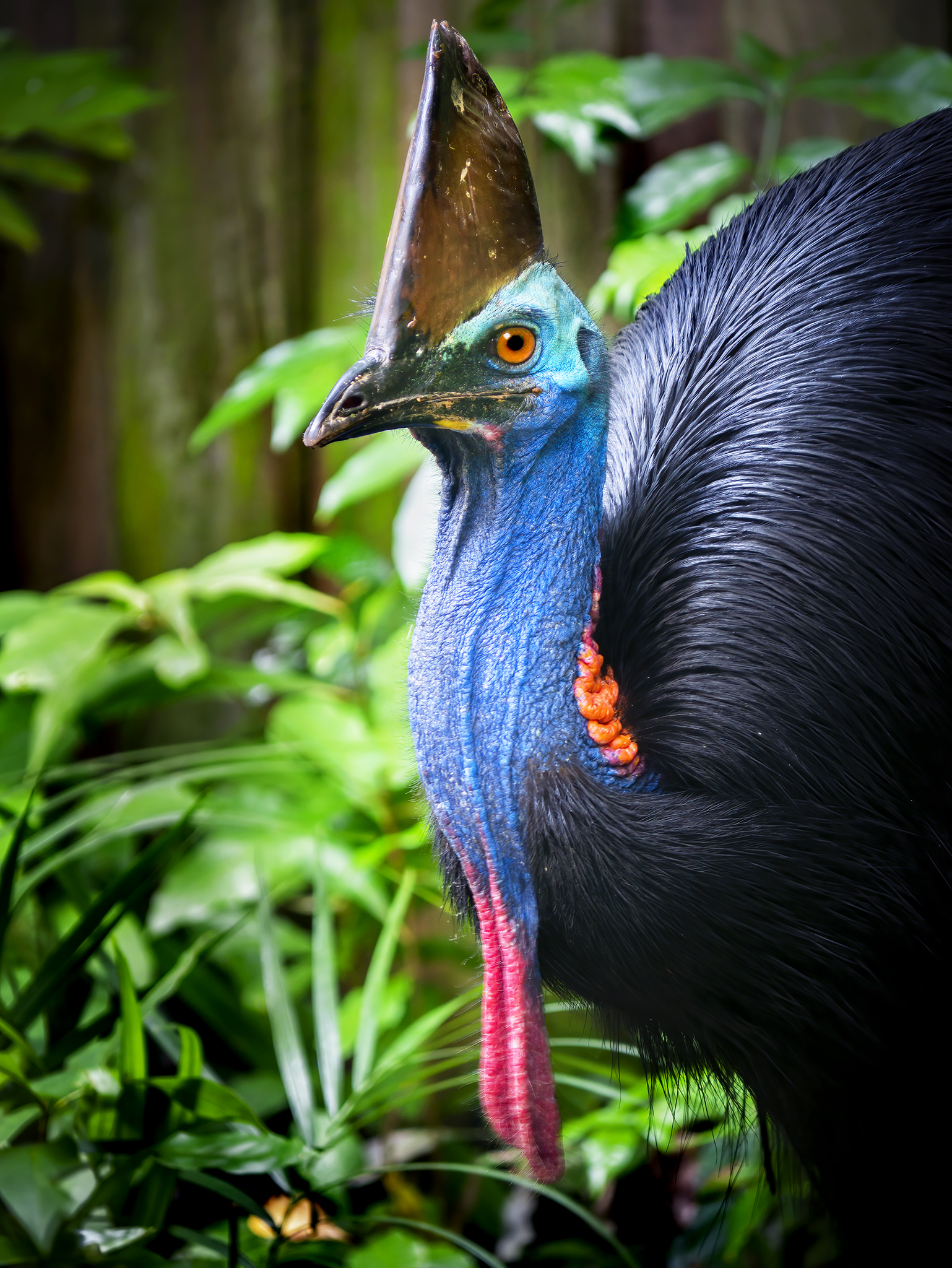This stunning creature is the Southern Cassowary. He was photographed at Crocodylus Village in North Queensland’s Daintree Rainforest. Run by the wonderful Sally and Steve, Crocodylus is one of the most incredible places you’ll ever stay. With electricity for only a few hours a day, and simple lodgings that place you in the heart of the world’s oldest rainforest, Crocodylus is a raw, authentic jungle experience.

Not only will you be ducking under the monstrous webs of Giant Golden Orb-Weaver spiders, or being woken by the screeching late-night cries of the Orange-Footed Scrub Fowl, you’ll also be inhabiting the territory of this beautiful cassowary, who passes through Crocodylus most days with his chick.
If you do decide to visit Eugene (his name is Eugene), remember these important rules – don’t feed Eugene, and don’t touch Eugene’s baby. Should you choose to not follow these rules, I cannot be held responsible for Eugene’s actions.

Male cassowaries (like Eugene) are some of the best fathers in the animal kingdom. Immediately after laying eggs, the female is like, “alright, bye, I’m off to go chase some more tailfeathers” (she can lay up to three different sets of eggs to three different males every breeding season).
The males, however, will incubate the freshly-laid eggs for around 50 days and barely eat or drink for this period. Then, once hatched, the father will continue to care for the chicks for up to 18 months. This can even involve chasing away the mothers, who have been known to kill the smallest chicks.

While caring for his babies, the male cassowary is a magnificent educator, teaching his chicks how to navigate the more than 150 species of fruit that make up the cassowary’s diet. He is also highly protective during this period, and can become aggressive if he feels his babies are under threat.

However, despite their reputation as a fearsome bird, only one death has ever been attributed to a cassowary in Australia. In 1926, two teenage boys tried to kill a cassowary by hitting it with sticks. The cassowary lashed out in defence and managed to slice the jugular vein of one of the boys with its sharp talon.
The moral of the story – don’t hurt the cassowary, and it won’t hurt you.

Cassowary chicks start off with dark brown stripes, which gradually fade into a uniform light brown after 3-6 months. However, it can take up to five years for the chick to appear as an adult, with black plumage, a vibrantly-coloured face and neck, and a large brown casque atop the head (made out of keratin – the same stuff as your fingernails).

The purpose of a cassowary’s casque is debated, and it probably serves multiple functions, including protection, and attracting a mate. However, research in 2019 demonstrated that its primary purpose is likely as a thermal regulator, helping cassowaries to handle the extreme heat they often find themselves in. Incredibly, Cassowaries have been shown to retain heat within their casque during cold weather, and then release it during warmer weather.
Imagine wearing a permanent mohawk-shaped beanie that you could switch on and off as required!
–
Southern Cassowary (Casuarius casuarius), Daintree Rainforest, Australia


